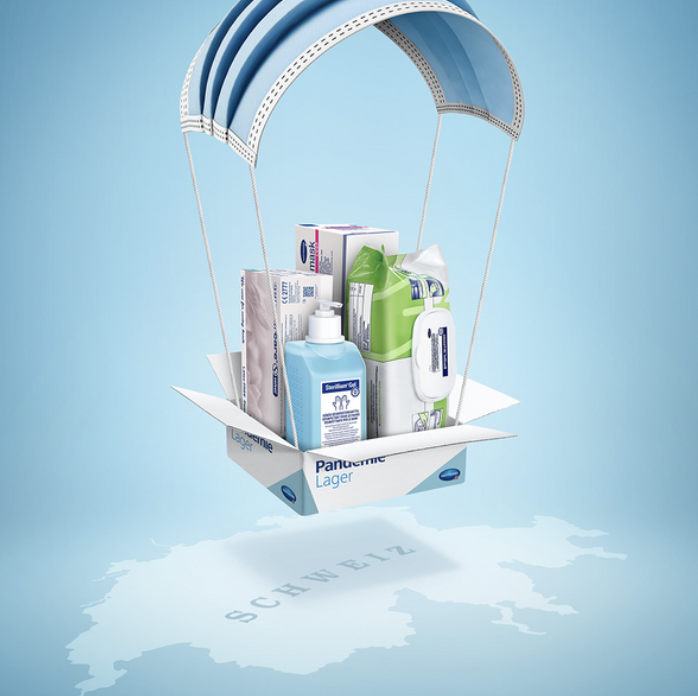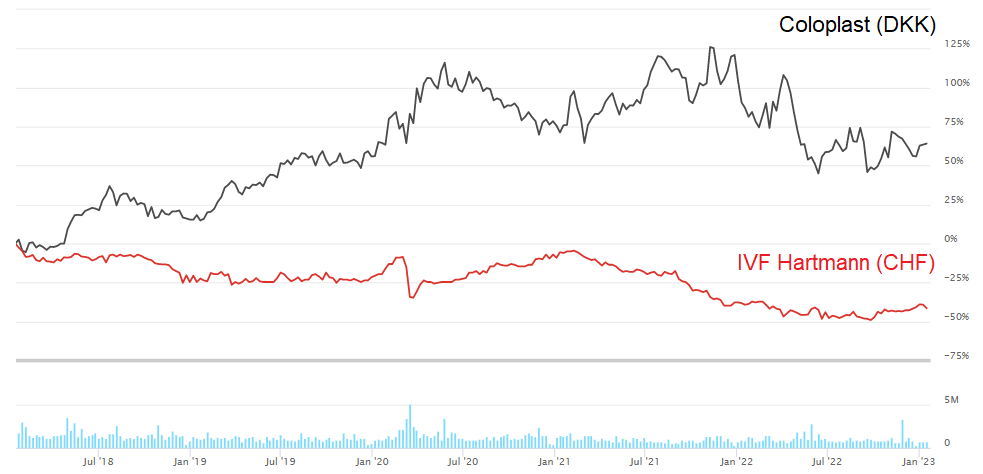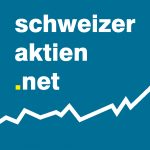
It may be rich in tradition, but this manufacturer of medical consumer goods rarely makes the headlines. Covid was one such occasion, when demand for sterilizing agents initially soared. The buzz around IVF Hartmann has died down since. But following a dramatic correction that started in February 2021 and lasted for the whole of that year, and then a prolonged period of consolidation, the shares are now catching the eye – with price development rather resembling the shape of a saucer. So is a breakout on the cards?
Based on just a cursory look, IVF Hartmann appears to be a rather boring stock. But for many years, it was one of the more reliable performers of the Swiss stock market. After the IPO in December 1997, the shares then multiplied in value by a factor of 15 over the following two decades. And then there is the dividend – which has risen from CHF 1.90 per share in 2013 to CHF 3.50 in 2021, although CHF 1 of the latter was a one-time special dividend to mark the company’s 150th anniversary. But in 2022, the annual payout to shareholders was cut to CHF 1.90. And 2021, the last full financial year for which definitive figures are available, proved to be a brutal one. (Chart VBSN, since IPO)

Boom and bust during the pandemic
Following the initial Covid-related boom in demand, above all for sterilizing agents, the development of orders from hospitals, care homes, and pharmacies gradually weakened. Demand then declined even further as a result of the postponement of non-urgent operations. In 2022, inventories at clinics and other consumers remained high. At the same time, IVF Hartmann was confronted by cost increases for materials, energy, and transportation, as well as supply delays and disadvantageous exchange rate movements. The company was only able to pass on some of its higher costs to clients, and even then with a time lag, which contributed to a temporary decline in profitability. On the other hand, although new providers forced their way into the market over the course of the pandemic, thanks to its cost leadership IVF Hartmann managed to not just maintain market share, but in some areas even expand it.
Cost-cutting bears fruit
In the 2021 financial year, sales declined by 16.7% to CHF 144.1 million, while net profit declined disproportionately by 65.2% to CHF 6.2 million. However, remedial measures taken that year began to bear fruit as early as the first half of 2022 – whereas half-year sales rose by 1.6% to CHF 72.9 million, profit surged by 31% to CHF 5 million. The EBIT margin rose by 1.7 percentage points to 8.3%. The company had already outsourced parts of its production to more cost-effective locations abroad back in 2021. In the same year, the new logistics centre in Neuhausen commenced operations. The manufacture of certain products was outsourced to suppliers in 2022. By contrast, the volume of products destined for local distribution was ramped up at the Neuhausen location. As at 30 June 2022, IVF Hartmann still employed 312 staff in Switzerland, a year-on-year decline of 7.7%.
The cyclical element
Although IVF Hartmann is a basic supplier of medical consumer goods and its growth is not normally very cyclical, it has become clear that imbalances in supply and demand – very much in evidence since the start of the pandemic – can make the development of its business more vulnerable to the ups and downs of the economy. The key business areas are surgical supplies, wound care, incontinence management, disinfectants, first aid, and household products. The company also produces medicated plasters with active ingredients, which generate higher margins. Client-specific services help to improve processes in the treatment and support of patients with chronic conditions such as incontinence management. Digitalization plays an increasingly important role here.
From pioneer to system supplier
The company can boast a long history and maintains a strong sense of tradition, while at the same time being committed to the spirit of innovation, in keeping with its foundation story. Wars have been a recurrent theme over the centuries, and soldiers would often die not from the wounds themselves but from subsequent infections. The Franco-Prussian war of 1870/1871 led to the founding of the world’s first-ever factory for the production of dressing materials, after it had become apparent that fine cotton fibres in the form of wadding were highly suitable for the sterile treatment of wounds. This factory in Schaffhausen – or the «Fabrik medizinischer Verbandstoffe des H. Th. Baeschlin» as the company was named – was the forefather of IVF Hartmann. Plasters were then added to the range from 1885 onwards. Other success stories include the brand DermaPlast, which was established in 1926 and still has a market share of some 80% in emergency kits even today. The first alcohol-based hand disinfectant – Sterilium – was launched in 1965, and remains a market leader in the prevention of infection.
Takeover and change of name
The company has borne the name Hartmann only since 1993, when Germany’s Hartmann Group acquired a 60% stake in the business from Galenica. The initials IVF were added to the company name later following an acquisition. The takeover by Hartmann AG, which was founded back in 1818, made a lot of sense and resulted in valuable synergies. For his part, Albert Hartmann had founded the first German dressing factory in Heidenheim in the aftermath of the Franco-Prussian war, and produced wadding using the Swiss procedure. This was then impregnated with a germicidal antiseptic. With sales of EUR 2.3 billion, the Hartmann Group is now a European market leader in the supply of medical consumer goods for specialist distribution, clinics, doctors, care homes, and pharmacies. Among others, the Group’s scope of consolidation includes the companies Bode Chemie, Kneipp, Karl Otto Braun, and of course IVF Hartmann.

Shareholder base
The Hartmann Group holds 71.2% of the shares of the Swiss company IVF Hartmann. The free float is broadly distributed between more than 2,000 shareholders. The majority shareholder picture is rather more complex. For a long period of time, it was the founding family that held a majority stake. Up until 2015, there was a pooling agreement – which covered 80% of the shares with voting rights – stipulating that shares could only be sold to another pool partner. In 2008, Schwenk Limes Gmbh & Co. KG , a company belonging to the Schleicher family, acquired a majority stake in the German company Hartmann AG, but then sold this following the end of the pooling agreement. The shares are traded on the largely unregulated «Open Market» segment of the Frankfurt stock exchange, where companies are subject to only minimal disclosure obligations. For many years now, the free float is supposed to have amounted to some 99%. However, according to «Die Deutsche Wirtschaft» the Hartmann family is still the owner of the company.
Peculiarities
The liquidity of both stocks is rather low. In many cases, only a few hundred shares change ownership over the course of a day. It is at least questionable whether 99% of shares of the parent company are genuinely floating freely, or whether large shareholders exist in the background. After all, for trading volumes to be so low for a free float that is ostensibly so high is strange, as is the fact that institutional investors are so poorly represented in the shareholder base – the likes of KBC Asset Management (0.12%) and Hauck Aufhäusser Lampe (0.02%) hardly have substantial holdings. Equally curious are the loans from IVF Hartmann to the parent company on which the borrower pays negative interest.
Market capitalization of parent and subsidiary
The shares of IVF Hartmann are currently trading at CHF 114, or some 40% below the peak recorded at the start of 2021. The all-time high of just under CHF 220 was recorded back in 2017. The shares of the parent company are currently trading at EUR 230, having peaked at more than EUR 400 at the start of 2021. The market capitalization of the parent is EUR 817 million, that of the subsidiary IVF Hartmann CHF 272 million.
Franchise value
From a valuation perspective, IVF Hartmann looks highly attractive in the current stock market environment. The company’s profile of delivering steady (albeit low) growth with solid profit margins and a strong competitive position points to continued positive business and earnings development. A key point is that IVF Hartmann is a system provider to the Swiss healthcare industry. Be it surgical drapes, sterilization products, or wound dressings – everything comes from a single source. New products are developed together with users. Indeed, it would not be exaggerating things to say that there is a «deep moat» between IVF Hartmann and its competitors, and so the company has a high franchise value. Over the last few years, the equity ratio has been not far shy of 80%. The last regular dividend distribution totalled CHF 4.6 million – but in previous years amounted to CHF 6 million.
EU bureaucracy a barrier to growth
In addition to the established risks, the increasingly frosty relationship between the EU and Switzerland poses a problem. For an integrated healthcare group active in both jurisdictions, the flood of regulation and the plethora of documentation obligations and certificates of conformity required in the EU represent a burdensome and business-damaging level of bureaucracy that not only scares off users, but also gives rise to expenditure and opportunity costs, thereby weakening the company’s competitiveness. All the more so because cross-border co-operation in the case of Hartmann dates back to the 1870s, and has functioned in an ideal – even exemplary – way for decades, to the benefit of both patients and public health.
Corporate citizenship
IVF Hartmann sees itself as a system-relevant basic supplier to the Swiss healthcare industry. One important lesson of the pandemic was that holdings of critical medical consumer goods need to be increased to guarantee a better level of supply security. However, building up such inventories for the general good also ties up capital.
Lack of ESG reporting
Another challenge faced by the company is the very undeveloped nature of its sustainability reporting. It is clear from company reports that 100% of IVF Hartmann’s electricity is obtained from green sources, and that recycling solutions are a priority. In addition, the «Code of Ethical Business Practice» of Swiss Meditech, the association of Swiss medical technology, lays down best practice guidelines for the conduct of employees. But there is no information currently available on attempts to reduce water and energy consumption, for example, or on Scope 3 emissions. Equally, interested parties will not find anything about equality of opportunity or equal pay for women. But the most glaring hole of all lies on the governance side. IVF Hartmann’s Board of Directors includes representatives of the major shareholder. However, nothing is said at annual financial statement press conferences and similar events about the company’s strategy, targets, intentions regarding the majority shareholding, or similar future-oriented questions. The company keeps its cards close to its chest. Quite clearly, up until now no great importance has been attached to the provision of company information to external shareholders.
Summary
The Swiss company IVF Hartmann would appear to be a jewel in the holding portfolio of Germany-based Hartmann AG, as can be gleaned purely by looking at the very different P/S ratios of parent and subsidiary: 0.3 for Hartmann and almost 2.0 for IVF Hartmann. The oscillations in demand since 2020 have prompted the company to restructure its processes, which has in turn led to an expansion of its cost leadership. As a system provider, its market positioning in the Swiss healthcare system is outstanding, even if competition is noticeably on the rise. From an investor’s perspective, both the valuation and company profitability look to have upside. Another intriguing factor for investors is the scope for improvement in capital market visibility. A determined effort to develop the kind of ESG reporting expected in the modern era could bring the company to the attention of new circles of investors. Indeed, IVF Hartmann would probably score quite well in various areas, for all that governance would not appear to be one of them.

The question marks over the intentions of the majority shareholder probably also explain the stock’s low liquidity and its fairly mediocre price development within the healthcare universe. For example, the Danish incontinence and wound care specialist Coloplast can boast a price performance trajectory of +63% over the last five years – and IVF Hartmann is obviously light years away from this at -43%. But it is precisely the company’s potential upside that could give the shares a boost as soon as greater change momentum is discernible. The long-term graph of IVF Hartmann stock performance shows a pronounced and apparently solid period of consolidation, which could serve as a launch pad if the price were to break through the CHF 125 mark in a lasting way. The next price target would then be CHF 190 – the interim peak recorded in 2021 – and thereafter levels above the all-time high of CHF 220 recorded back in 2017.






